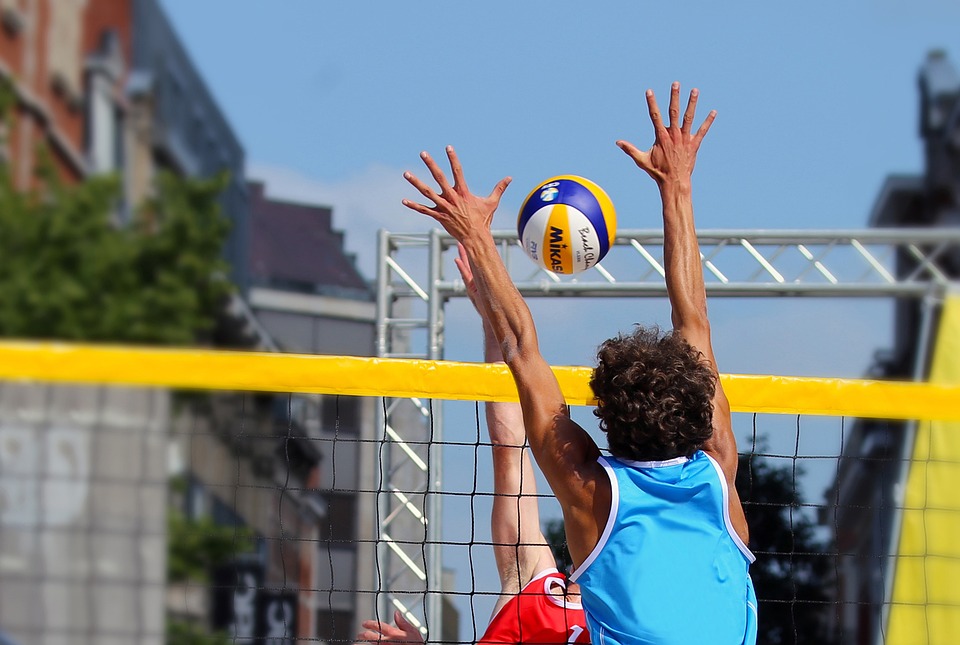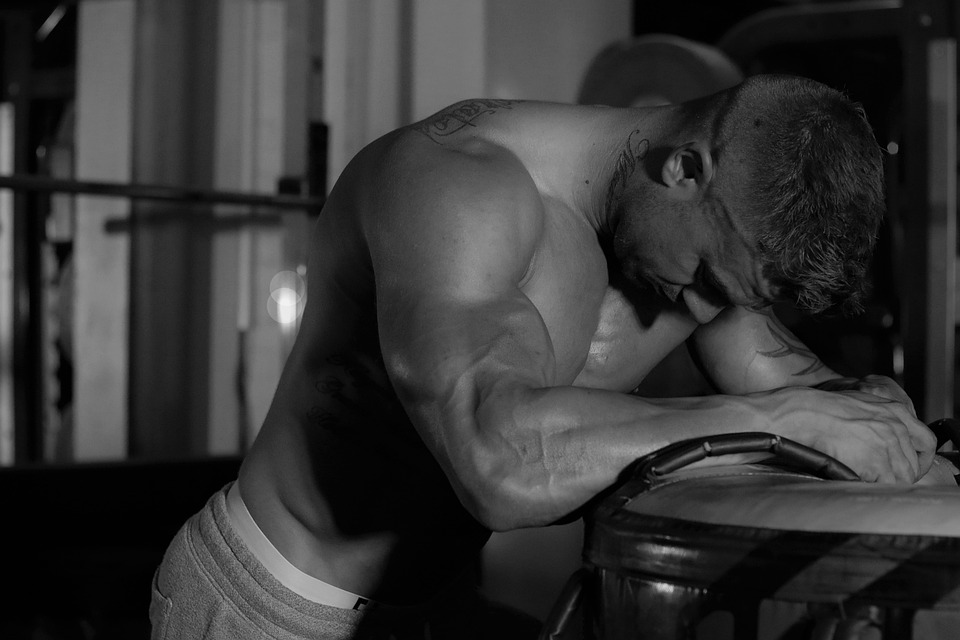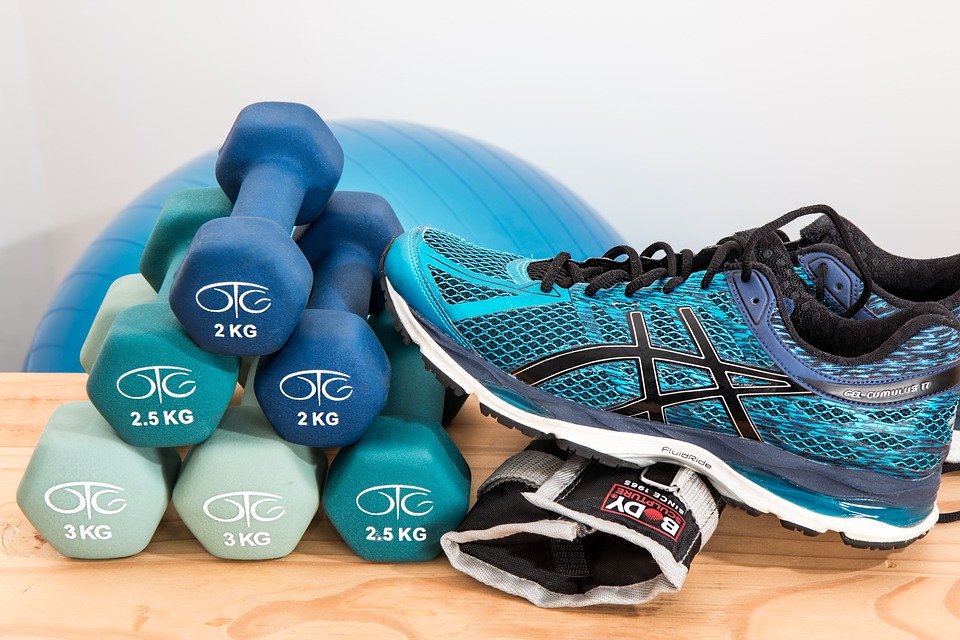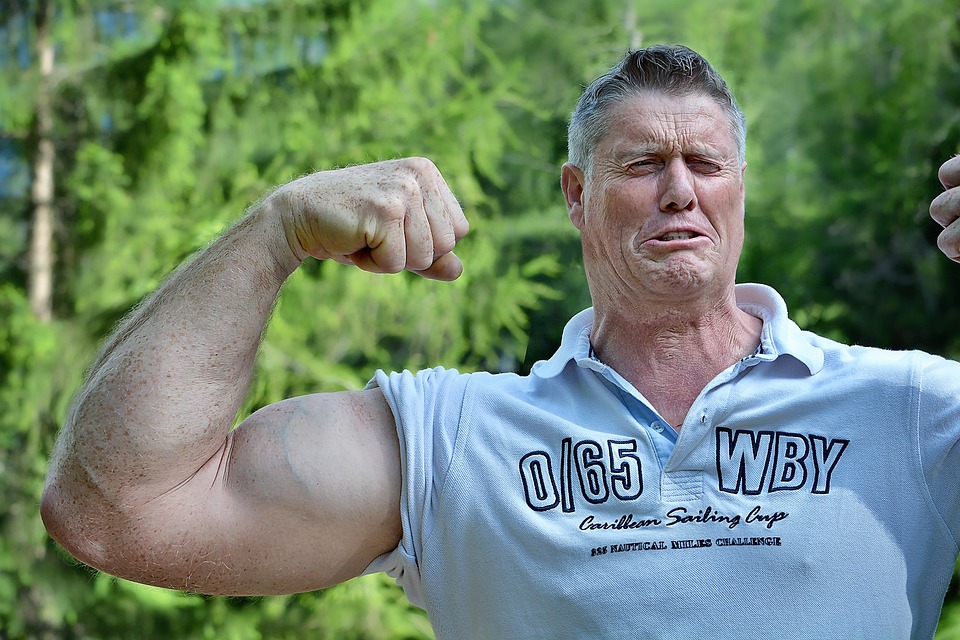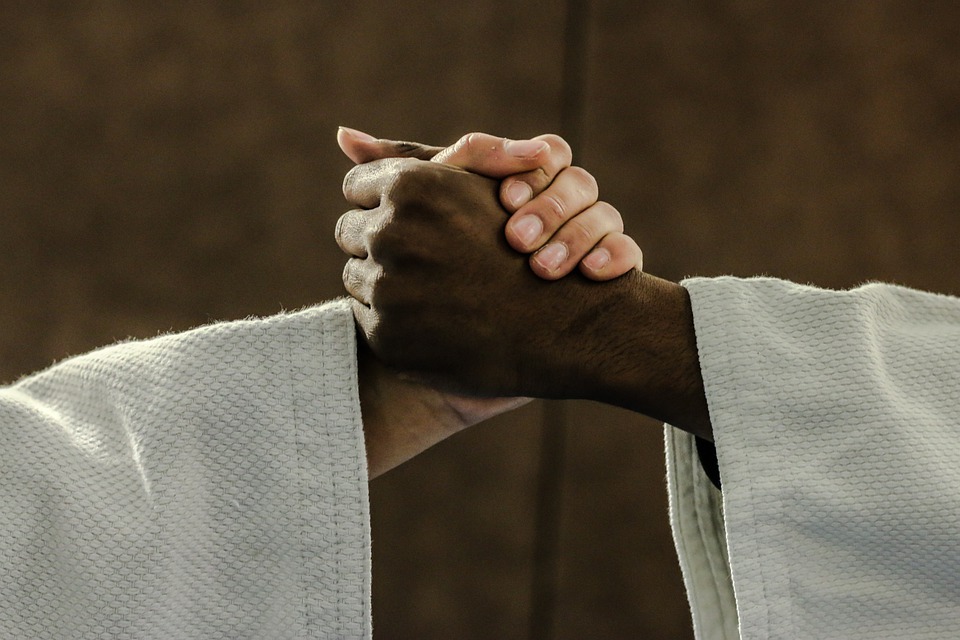
Conditioning for Judo requires developing a strong anaerobic lactic energy system after building a strong aerobic base. The best way to transfer conditioning to Judo performance is by performing conditioning using throwing techniques.
Match Demands Of Judo
There are four classifications of actions in a Judo match: 1. Standing techniques 2. sacrificed techniques 3. groundwork 4. Randori When we breaking down the match demands of Judo, we need to classify the actions taken in the match. There are four different classifications of actions in a Judo match: standing techniques, sacrificed techniques, groundwork, and Randori.
- In-activity or Break – pause in the match.
- Preparation – phase of preparation for grip disputes.
- Grip dispute – this involves fighting to secure grips in order to execute a throwing technique. In fact, approximately 50% of active match time is spent in grip dispute.
- Technique (nage-waza) – the execution of a throwing technique.
- Groundwork (ne-waza) – technical actions on the ground.
If a judo match results in a draw, a no-limit extra time period takes place until one of the athletes scores a point.
No matter what level of competition it is, Judo matches only last for about 3 minutes. The level of activity during a match ranges from 10 seconds to 63 seconds (for things like grip disputes, throwing techniques, and groundwork), with inactive periods lasting from 1 second to 22 seconds.
As the match progresses, the periods of activity become shorter and the periods of inactivity become longer.
This means that for every two or three seconds of activity, there is one second of rest. This can be further broken down into how the activity period is spent during a match.
Approximately 4 seconds are spent on preparing, 16-18 seconds are spent on grip disputes, 1-1.7 seconds are spent on throw attacks, and 9-17 seconds are spent on groundwork.
Grip strength and endurance are important factors in Judo success because grip disputes make up about 50% of total activity time.
I am providing the time ranges for activity periods alongside the average activity periods so that you can have a more complete picture. If you only relied on averages, you would not be able to optimize your Judo preparation as you would not be prepared for activity periods that are longer or shorter than the average.
Conditioning Requirements For Judo
Aerobic Capacity For Judo
Having a well-developed aerobic energy system is important for Judokas, as it prevents them from suffering between activity periods and matches.
Developing aerobic capacity for judo should have an upper body focus. These are the modes of exercise that I believe would provide a good aerobic foundation for Judo away from the mats:
- Arm ergometer
- Ski ergometer
- Medicine ball circuits
- Airdyne to a lesser extent
There are several options for aerobic training that focus on the upper body, which is crucial to Judo.
Option 1 (Cardiac Output)
You should aim to do 30-60 minutes of continuous, steady-state work keeping your heart rate between 130-150 BPM and no higher.
Option 2 (Cardiac Power)
Interval training is a great way to improve your cardiovascular fitness. This workout consists of a 60-second maximum effort followed by a period of recovery. The recovery should last until your heart rate returns to 120-130 beats per minute.
Option 3 (Tempo Training)
You should work at a 20-40 second pace that is 70% of your effort for 20-40 seconds. You should then take a 20-40 second break. You can do this for up to 40 minutes.
Lactic Power and Capacity For Judo
This is where Judo and BJJ differ in training. While conditioning for BJJ mainly focuses on the aerobic energy system, Judo success seems to be highly influenced by the anaerobic energy system. This makes Judo a perfect combination of drilling skills and conditioning at the same time.
If you want to be able to throw more times during a match with the same amount of effort and energy, you need to develop your anaerobic lactic capacity and power.
These simple guidelines can be used for developing lactic power and capacity:
Option 1 (Lactic Power)
20-30 seconds maximum effort exercise with 1-2 minutes rest
Option 2 (Lactic Capacity)
Do a near-maximal effort for 45 to 90 seconds, then rest for 1 to 2 minutes.
Use throwing techniques when performing these protocols for the best results in your Judo performance.
The primary difference between a Super elite Judoka and an elite Judoka is the number of throwing techniques each is able to perform, as well as the directions in which they are able to execute these throws.
When you are doing lactic conditioning, you should focus on multiple throwing techniques instead of just one. This will help you improve your conditioning.
The conditioning stimulus mentioned is thought to be necessary in sustaining high power outputs. Also, by doing this one activity, a person gets the chance to practice multiple throwing techniques, which is beneficial because it effectively doubles the amount of technical training that a person can do.
According to Alex Natera, a method that could potentially improve the ability to repeat high-intensity efforts is high-volume power training.
This type of training potentially improves the ability to repeat maximal or near-maximal efforts such as various throwing techniques. A high-volume power training (HVPT) session has these guidelines:
Do 3-5 sets of 10-20 repetitions of the jump squat with 2-3 minutes of rest between sets. The load should be 30-40% of 1RM for the jump squat, and you should do this 2-3 times per week.
The Judo research suggests that the upper body is more important for throws than the lower body. It’s possible that upper body ballistic exercises could be used with the help of the High Velocity Power Training device, but this hasn’t been researched yet.
Alactic Power and Capacity For Judo
The SJFT results show that there is a lot of demand for energy from the alactic and anaerobic lactic systems. Therefore, it is beneficial to be able to produce high outputs of energy in order to improve the chances of scoring an ippon.
Option 1 (Alactic Power)
This type of power is generated through very short, very intense bursts of effort, followed by a period of full recovery that can last up to five minutes.
Option 2 (Alactic Capacity)
This type of capacity requires you to stretch your bursts of maximal effort to last 10-15 seconds with only 20-90 seconds of rest in between.
The best way to transfer your throwing techniques to Judo is by using the same techniques you would use during lactic training. However, you can also use other techniques, especially if you are already incorporating lactic work into your throws.
Some modalities that are similar to those in the aerobic energy system section can be done without using your feet.
The further you are from the competition, the more time you should spend developing your aerobic energy system alongside your alactic power and capacity.
The sport of running takes care of maintaining the anaerobic lactic energy system while the runner develops the higher and lower ends of their conditioning.
As you get closer to competition, the focus can shift to preparing for race conditions by doing specific training under conditions that will produce lactic acid, such as the ones presented above.
Core Training For Serious Judo Players
The core is one of the most important and least understood parts of the body. It has four main functions: 1. To support the spine 2. To stabilize the trunk 3. To generate power 4. To protect the inner organs
- Stabilization: Important for transferring force created in one part of the body to other parts of the body. For example, in judo, the push generated by your legs gets transferred up your core and into your arms so you can push against your opponent. If your core is weak, that force goes absolutely nowhere.
- Straight Line Flexion: Think crunches. Useful in groundwork, contraction brings your rib cage closer to your hips.
- Straight Line Extension: Think of it as standing up straight against a force trying to pull you downward.
- Rotation: Also known as twisting.
The term “anti-movement” can refer to the resistance of an opposing force or the contraction of opposing muscles. Essentially, if you want to prevent your body from moving in a certain way, you flex the muscles that would create the opposite movement. This type of training is natural for the human body, and most people develop the ability to do it by around the age of two.
Core Workout 1: Contraction Training
You can make your judo game better by using twisting versions of the exercises.
Incline Crunches
4 sets, 10-15 reps
If this is easy for you, you should make the workout more challenging by either increasing the incline or adding weight.
Hanging Leg Raises
4 sets, 10-15 reps
Do these exercises either hanging from a pullup bar or sitting in a leg raise chair. Make sure to bring your legs out in front of you until they are straight, or even a little higher. If you want to be a stud and try bringing your ankles to the bar, you can, but wait until you have done the next exercise before you try it.
Suspension Reverse Crunches
4 sets, 10-15 reps
If you don’t have a suspension trainer, you can use an ab wheel and do rollouts.
Workout 2: Rotational Training
The main point of this is to do rotational exercises. I prefer to use latex bands because they’re cheaper and more transportable than a cable stack. You can choose whatever you like though.
Band Chops Hi-Low
4 sets, 6-8 reps
Use a heavy enough band so that 8 chops are actually challenging. At the end of the movement, hold the contraction for a beat before slowly returning to the starting position.
Band Rotations (level bands)
4 sets, 6-8 reps
Stick Twists
4 sets, 25 reps
Although these are a higher number of repetitions, you can still increase weight if you want. For example, replace a broomstick with an Olympic bar to get a better feel for the weight. Remember to not just swing back and forth, but to pause and use your core muscles to start the movement in each direction.
Match Simulation (Worst Case Scenario) For Judo
We believe it is more important to be prepared for the worst-case scenario rather than just going by the average.
When you are getting closer to your competition, using training that focuses on what could happen in the match will help you be prepared for anything.
Although we typically emphasize the development of specific energy systems, there are times when it is necessary to take a non-physiological approach to training in order to fully prepare for competition.
When accounting for the amount of time an activity is performed compared to the amount of time it is paused, we can design drills that are progressive and prepare for a worst-case scenario. In Judo, this likely looks like:
- Grip dispute for 21 seconds
- Throwing attack
- Groundwork for 29 seconds
- Rest for 15-20 seconds and repeat (approximately 3:1 ratio)
To make the worst-case scenario more intense and exceed the demand of a competition match, it could involve using two throw attacks within the activity period.
- Grip dispute for 21 seconds
- Throwing attack
- Groundwork for 5 seconds
- Quick stand up to Throwing attack
- Groundwork for 20-25 seconds
- Rest for 15-20 seconds and repeat (approximately 3:1 ratio)
It could also go like this:
- Grip dispute for 15 seconds
- Throwing attack but opponent defends
- Throwing attack completed
- Groundwork for 29 seconds
- Rest for 15-20 seconds and repeat (approximately 3:1 ratio)
This means that you will be able to do twice as much in the same amount of time.
A study that was recently done has shown that a 3:1 work-to-rest ratio increases blood lactate levels more than a 2:1 ratio. This makes these worst-case scenarios good choices for anaerobic conditioning.
In this study, it was found that the highest blood lactate concentrations resulted from a 4m x 4m area of free randori, as opposed to a 6m x 6m or 8m x 8m area, or a 3:1 or 2:1 work to rest ratio.
San Antonio Singles Clubs If a judoka is fighting in an area that is 4m x 4m, and the goal is to achieve a 3:1 ratio, then this will likely result in elevated blood lactate levels. This suggests that fighting in a small area for a short period of time can be an effective way to target anaerobic conditioning.
The study does not indicate how long the simulated matches were.
FAQ:
Q: What about Landmines, slide boards, Turkish get-ups, etc?
B: I’m not here to judge how you work out, as long as it’s safe and effective. Some people prefer using bands over cables, and others feel they get a better workout using landmines instead of chops. Do whatever exercise you like, as long as it works for you.
Q: What about anti-rotation?
B: Adding an extra beat at the beginning or end of rotational movements can help with anti-rotation.
A: In terms of training the core for a throwing motion, I would focus on exercises that improve rotational power and stability. Specifically, exercises that involve swinging a weight or cable around in a circular motion can help to build the muscles needed for a powerful throw. Additionally, exercises that challenge the core muscles to maintain stability while the body is in motion can also be beneficial.
A: Throwing typically involves a combination of muscle contraction and rotation. For example, to complete a right-handed o-goshi hip throw, you would rotate your shoulders from your right side to your left side (roughly counterclockwise) while simultaneously bending forward and contracting your muscles. If you’ve trained both the rotation and the contraction, the muscles will be strong and prepared for when you practice the motion.


